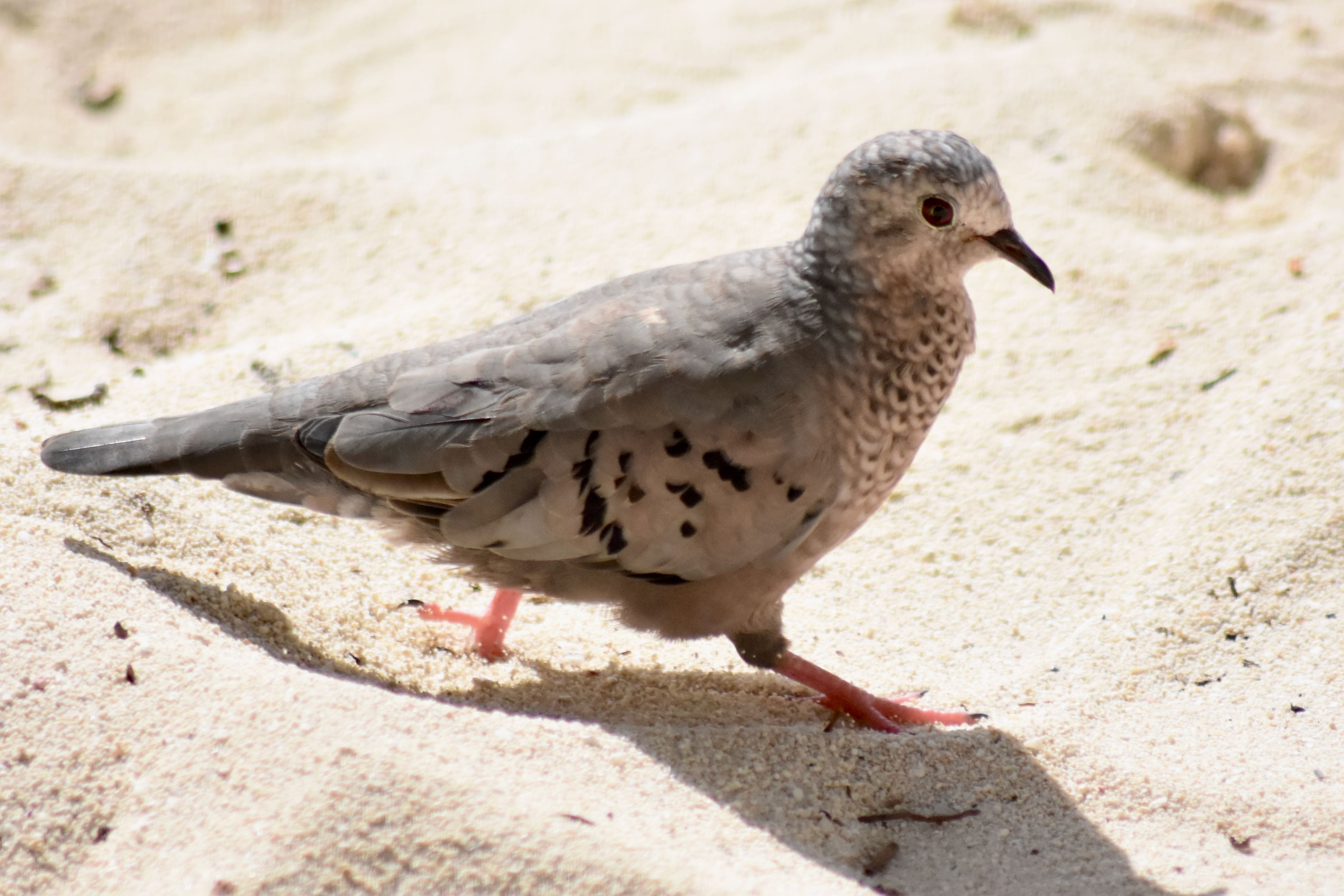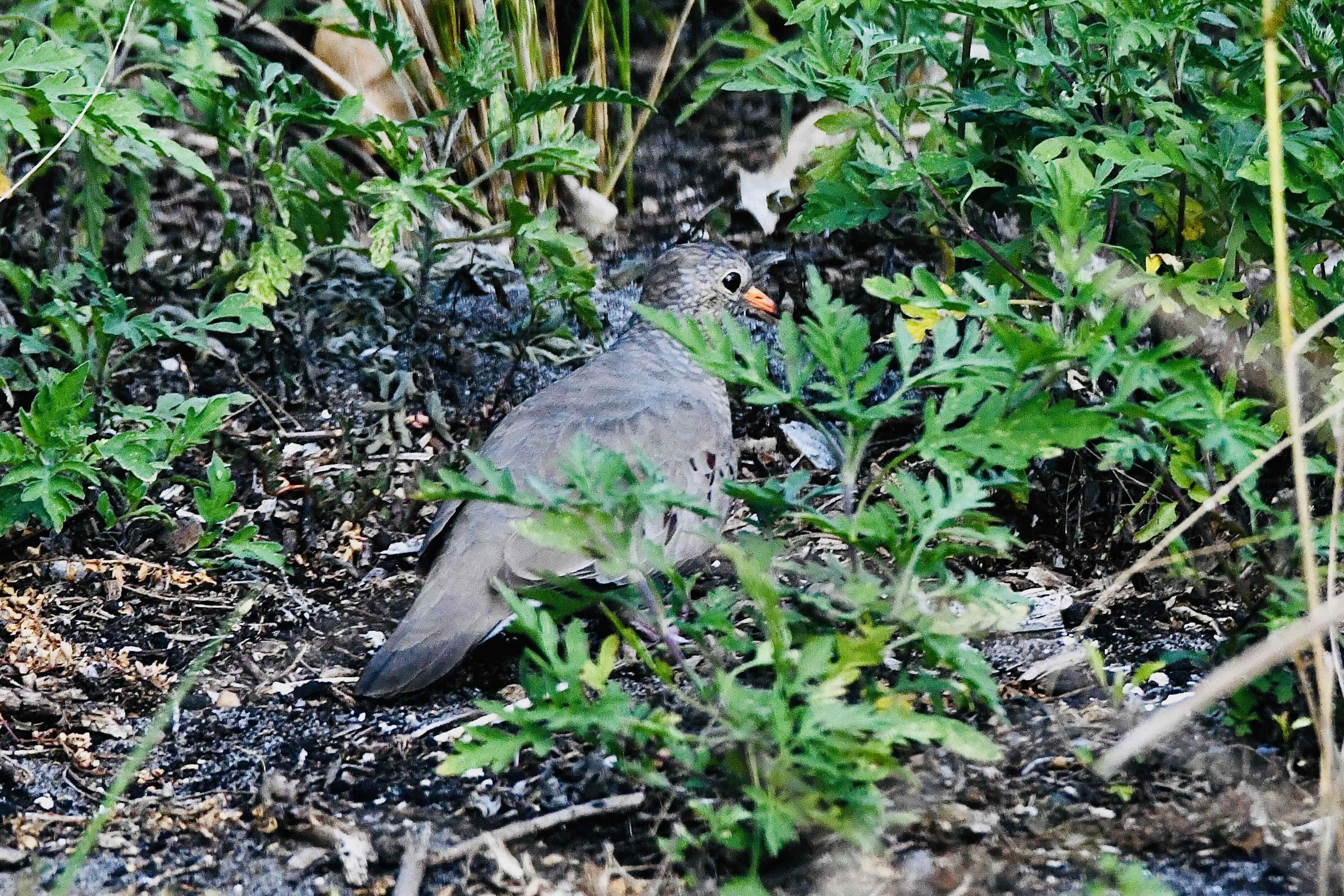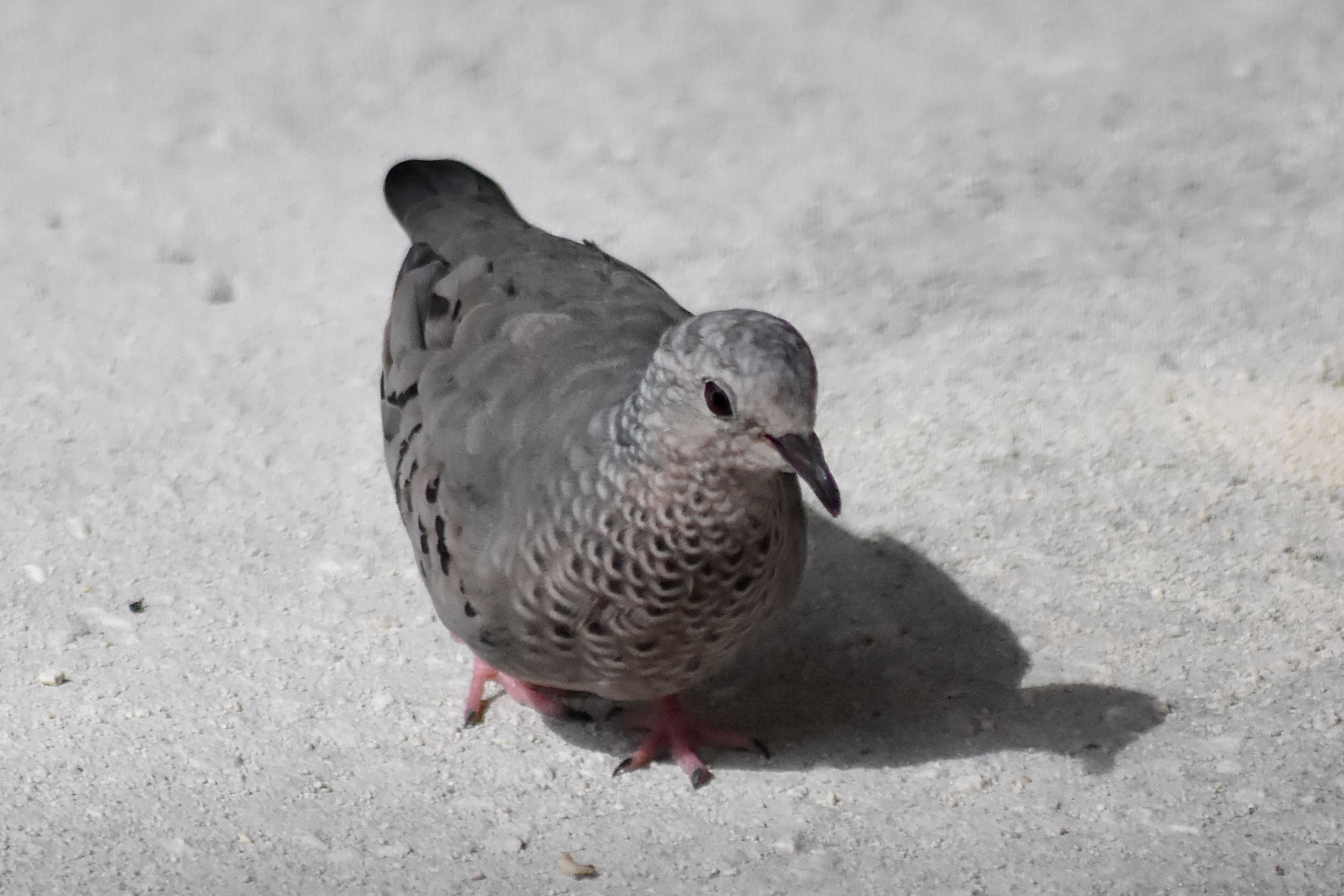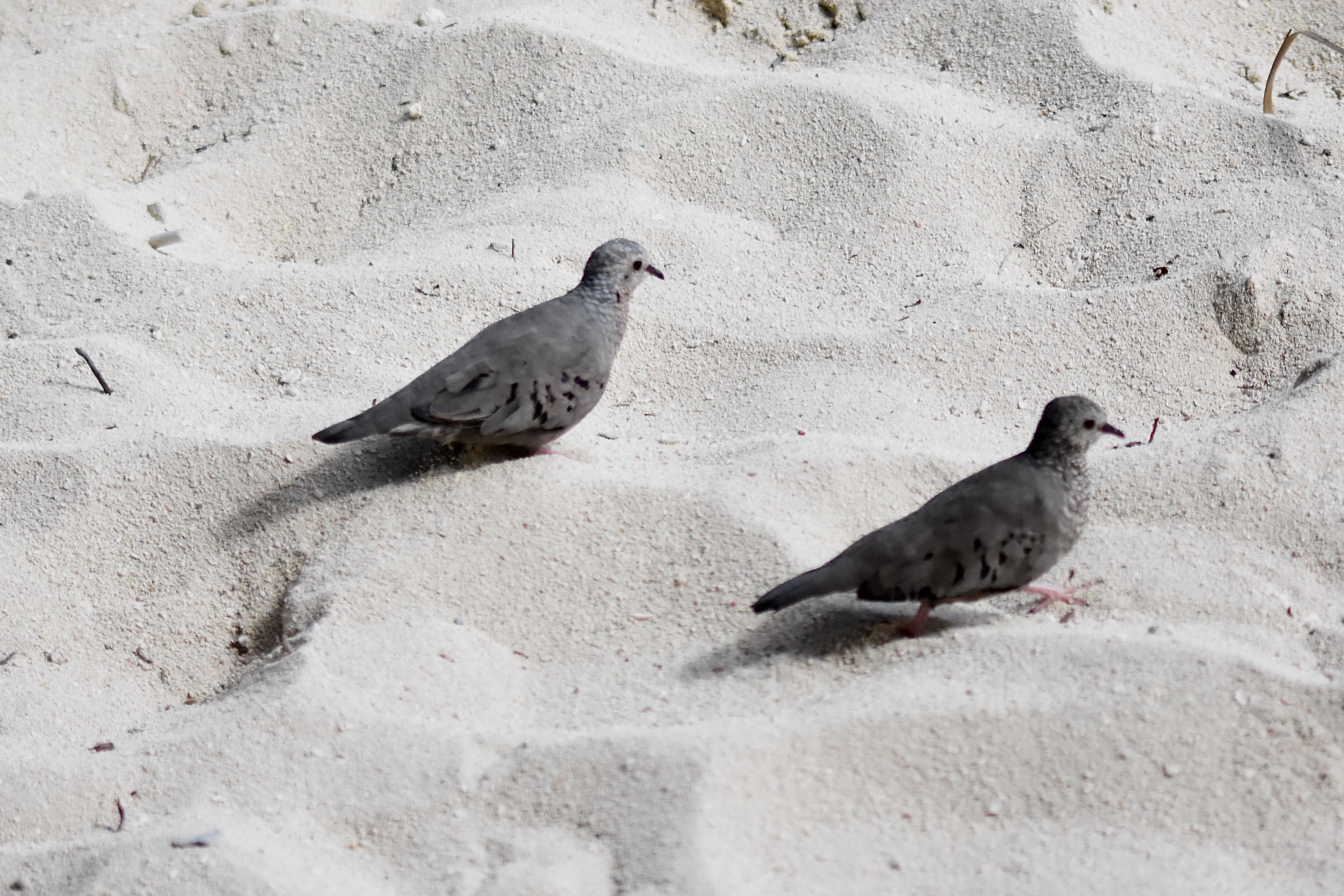
Common ground dove, photographed at Pondhawk Natural Area, Boca Raton, Palm Beach County, in February 2025.
What stands out about the common ground dove, Columbina passerina, is its size. Or more precisely, its lack of it. It has the same small head, plump body and short, pink legs typical of all doves and pigeons found in South Florida, but it is noticeably smaller.
It's so small that both Cornell University and Audubon compare it with a sparrow. And it fits: common ground doves are only about six or seven inches long.
Ground doves are common in Florida, more so in the central and southern sections of the Peninsula than in the Panhandle and other points north. They're also found across the southern tier of the United States, from the southeastern corner of South Carolina across to Texas, New Mexico, Arizona and California. Their range extends southward into Mexico, Central America, the Caribbean and into South America to Ecuador and Brazil. They do not migrate, generally, but some birds in the northern extremes of their normal range might scamper slightly south come winter.
Favorite habitats for ground doves include dry, open woods and scrub. They'll take to fields, groves and open pinelands. In places, they'll nest on the ground or in shrubs and trees not far off the ground. Both males and females take part in nest construction; on the ground, the nest is a shallow scrape lined with soft stuff like grass and small roots. When in trees and shrubs, it's a small, shallow platform made of sticks and pine needles.
Nesting season is pretty much year-round in Florida. According to the Florida Fish and Wildlife Conservation Commission, ground doves have been seen nesting in just about every month of the year in just about every part of the state; the major exception, according to surveys done in the 1980s and early 1990s, was mainland Monroe County; the birds were likely there, but not seen by the survey takers.

Typically, a pair will have four broods in a year, but can have a fifth. Each brood generally will have two eggs, which will require 12 to 14 days of incubation before hatching. Both parents share sitting duties. Both parents also will share the chore of feeding their offspring a substance called pigeon milk that is produced in a portion of their esophagus called a crop. The young pigeons will fledge at 14 to 16 days but will stick with their parents for a week or so afterwards.
Ground doves are ground foragers, not surprising given the name. They'll walk along the ground alone, sometimes in pairs, sometimes in flocks, in search of seeds and grain. They'll also swallow small gravel that will help grind harder seeds. Berries and insects make up a smaller portion of their diet; they're said to eat snails to replenish the calcium they lose when they feed their chicks pigeon milk.
As noted earlier, they're typical doves in shape, with small heads, plump bodies and short, pink legs. Ground doves are brownish, with a bit of a pink wash, males more than females. The wings have black spots, squared-off tips and flash red when the bird is flushed into flight. Their heads, throats and chest have a "scaly" look to them. The bill is thin and two-toned, dark red at the base, turning black near the tip.
Common ground doves are members of Columbidae, the family of pigeons and doves. An alternate scientifice name: Zenaida passerina.
Pondhawk Natural Area



